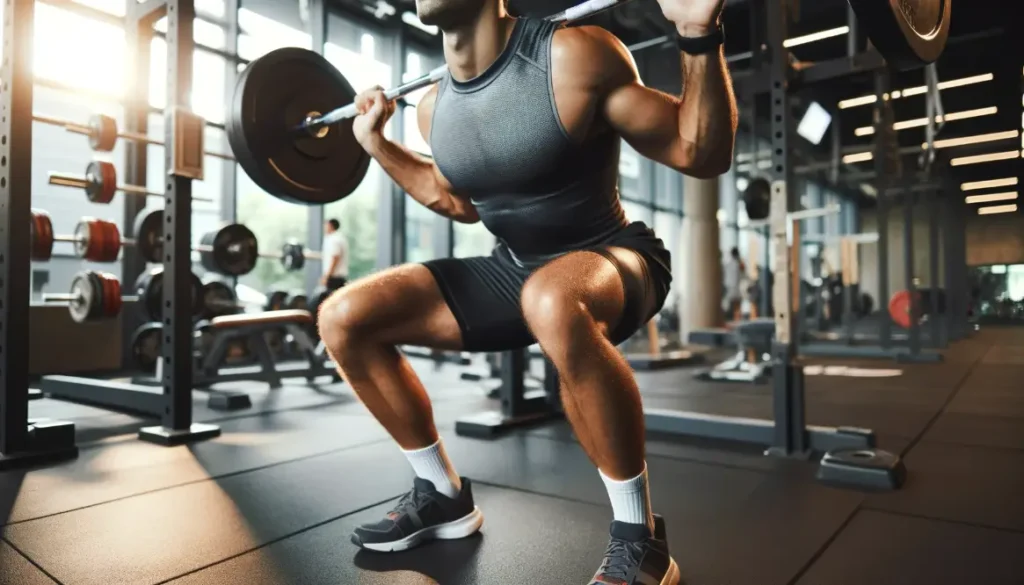
Having strong legs is crucial for cycling performance. The stronger your legs are, the more power you can put into the pedals to ride faster and farther. Building leg strength offers many benefits for cyclists.
Benefits of Strong Legs for Cycling
Stronger legs allow you to:
- Climb hills more efficiently without gassing out
- Accelerate faster
- Maintain higher speeds with less effort
- Avoid fatigue, soreness, and injury
- Improve handling and control of the bike
Assessing your current leg strength through weights used, reps completed, or a simple wall sit test is useful for gauging improvement over time as you work on leg strengthening.
Ways to Build Leg Strength for Cycling
There are a variety of effective methods to get stronger legs tailored specifically for cycling.
Cycling Workouts to Build Leg Strength
Incorporating challenging leg-focused cycling workouts is the most cycling-specific way to build strength.
Hill Repeats
Repeating short, intense hill segments stresses your legs in a focused, strength-building way. Build to doing 8-10 hill repeat sessions over time.
Standing Climbing
Climbing out of the saddle engages your glutes, hamstrings and quadriceps more dynamically. Stand to climb for 30 seconds to 1 minute at a time during rides.
High Cadence Intervals
Pedaling at 110+ RPM recruits more muscle fibers for leg strengthening. Try intervals between 3 to 5 minutes in length.
Single Leg Cycling
Isolating one leg at a time increases strength by removing compensations. Alternate legs for balance every minute or more.
Off-the-Bike Exercises

Cross-training with leg-focused gym sessions builds overall lower body strength to translate to cycling.
Squats
Squats are excellent for quadriceps, glutes and hamstring development. Use your bodyweight or add dumbbells/bands.
Lunges
Lunges target quadriceps while emphasizing mobility and balance. Perform reverse and lateral lunges too.
Leg Presses
Leg presses allow higher weight loads and intensity compared to squats. Vary foot positioning for emphasis.
Wall Sits
Simple bodyweight wall sits train isometric endurance for cycling. Work towards holds of 60-90 seconds.
Calf Raises
Calf raises specifically target the gastroc and soleus muscles for pedaling power. Use stairs or blocks to increase range of motion.
Yoga and Stretching
Incorporating flexibility work like yoga or dedicated stretching enhances leg strength by enabling a more powerful pedal stroke. Hip openers, hamstring stretches, and warrior poses transfer well onto the bike.
Nutrition for Leg Strength
Fueling properly provides energy and supports workout recovery for optimal strength adaptations over time.
Macronutrients – Carbs and Protein
Consuming carbohydrate-rich meals and snacks ensures adequate muscle glycogen to fuel challenging cycling leg workouts. Taking in 0.5-0.7 grams of protein per pound of bodyweight aids muscle repair. Time protein intake before/after cycling sessions.
See also: Can we do Cycling after Dinner? Pros and Cons Explained
Key Micronutrients
Certain vitamins and minerals play key roles in building leg strength.
Iron
Getting sufficient dietary iron allows optimal oxygen delivery to working muscles. Iron supports endurance and avoids fatigue. Spinach and red meat are top sources.
Vitamin D
Vitamin D helps regulate protein synthesis needed to build stronger muscles. Sun exposure, eggs, fish and vitamin D-fortified foods like milk help obtain enough.
Other Tips for Stronger Cyclist Legs
Beyond specifically training and fueling your legs, additional strategies complement getting stronger.
Use Proper Gearing
Utilizing easier gears for hills and intervals allows your leg muscles to work at higher intensities perfect for strength building.
Schedule Rest Days
Rest days are when your leg muscles repair and get stronger. Avoid overtraining legs without adequate recovery time.
Get Adequate Sleep
Hormones critical for muscle growth like human growth hormone and testosterone are produced during deep sleep stages. Prioritize 7-9 hours nightly.
Stay Hydrated
Drinking enough water and electrolyte-containing sports drinks reduces muscle fatigue to enable leg strengthening progression.
Conclusion
Building cycling-specific leg strength allows you to ride longer and faster. Prioritizing challenging hill climb sessions, targeted exercises like squats/lunges, proper on- and off-bike recovery, and strategic fueling together offer a comprehensive approach to get stronger legs. Work these tips in gradually and you will be conquering climbs in no time!
FAQs
What muscles do cyclists use the most?
The quadriceps at the front of your thigh perform the primary work to pedal, along with assistance from the gluteus maximus and hamstrings. The hip flexors also contract to pull the leg upwards through the pedal stroke.
How soon can you expect leg strength gains from cycling?
Consistently incorporating leg-focused cycling workouts leads to noticeable strength improvements within 6 to 8 weeks. Stick with sessions 2 to 3 times a week to spur growth.
Can you get too strong for long distance cycling?
Building “too much” pure strength can make sustaining an aerobic pace more fatiguing. But there are always gains to be made increasing muscular endurance – the ability to pedal powerfully for hours on end through hills and headwinds.
Is cycling enough for leg strength training?
Most cyclists find combining cycling intervals with 1 to 2 gym sessions weekly more effective to build leg strength than just bike riding alone. Complementing cycling avoids muscular imbalances.
What should you eat after a tough cycling workout to help leg recovery? Quickly consuming carbs to replenish glycogen stores as well as 20-25 grams of protein promotes repair of stressed leg muscles to get stronger. Chocolate milk, yogurt, eggs and snack bars are convenient options.






